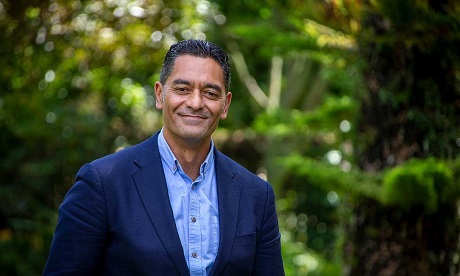Māori-led research is needed to understand poverty. So says Massey University’s Pro-vice Chancellor Māori, Professor Meihana Durie (pictured).
The Government should focus Māori-led research on the causes of high poverty among tamariki instead of dismantling former Māori leaders’ work, he says.
“What we know from Māori led research projects is that the data that reveals itself … is incredibly accurate … because our people have very good levels of access to our communities and to our whānau …
“I would strongly encourage that approach…” he says.
The statistics
Stats NZ’s newly-released child poverty data for the year ended June 2023 provides some sorry reading.
It is the fifth reporting year since the Child Poverty Act came into force in 2018.
The latest data show that, despite the push over the past few years to address poverty, there’s been no improvement.
Instead, the data show an annual increase (12 months from end June 2022) in two of the three primary measures of child poverty for the country’s total population.
Stats NZ data is based on nine measures set out in the Child Poverty Reduction Act 2018. It is gathered through a mixture of interviews with households and data.
Like tamariki Māori, Pasifika children and disabled children experience some of the highest rates of poverty in New Zealand. For them, Stats NZ found there was no significant change in the 2021 to 2023 years.
Durie says there are concerning signs in the data, which does not show the full picture.
What we’re seeing “probably only tells us a small part of the bigger story and the bigger narrative in terms of the things that are really contributing to abject poverty” he says.
It doesn’t show that Pacific children experience a higher incidence of a range of health conditions than other children for example.
These include respiratory conditions, skin infections, dental problems, ear disease and hearing difficulties.
Unacceptable and concerning
Chief Children’s Commissioner Claire Achmad also finds the data concerning.
The most commonly referred to measure – children living in material hardship – jumped from 10.5 to 12.5 percent overall.
That’s one in eight children, or 143,700, compared to 120,300 in June 2022.
“For the first time since 2018, we have actually seen poverty rates increasing particularly around material hardships” she says.
She defines material hardship as doing without at least six essentials including fresh fruit and vegetables, heating and regular doctors visits.
“It’s unacceptable that 21.5 percent of mokopuna Māori are experiencing material hardship, for 28.9 percent of Pacific children this is their every day reality, and for 22.3 percent of children with disabilities” she says.
Achmad wants the Government to invest in children and implement evidence-based policy to help the children reach their potential.
She urged it to support Pacific-led initiatives within communities already tackling the issue of poverty.
“We need to maintain the momentum on Pasifika-led solutions for Pasifika families” she says.
Government response
The Government is introducing a FamilyBoost childcare tax rebate. It is expected to help 130,000 low- and-middle-income families keep more of what they earn, with up to $75 more in their after-tax pay each week.
Next year it aims to increase the Working for Families In-Work Tax Credit.
Source
Additional readingNews category: New Zealand.




